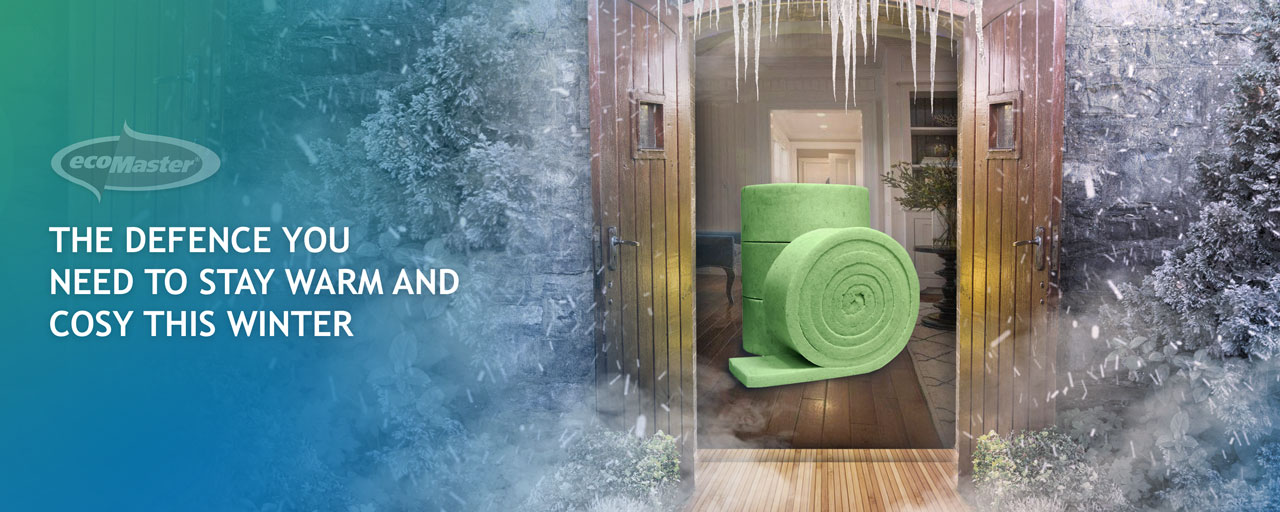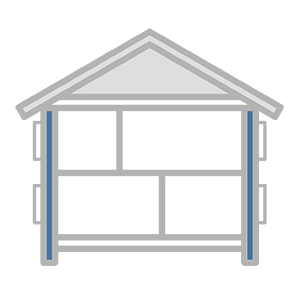
Excessive ventilation and an abundance of air spaces are the leading factors why a home can never lock in warmth and sustain a comfortable indoor temperature. This then leads to a cycle of uncontrollable heat and cold exchange which only causes you to use more energy than necessary to strike a balanced temperature.
The good news for every Victorian household, however, is that there is a long-lasting, cost-effective, and environment-friendly remedy to this problem. And that is all-home insulation.
These are the 5 elements responsible for maintaining a cozy indoor temperature. Read on to find out how each of these approaches can guarantee you comfort this winter season.

1. Draught Proofing
Draughts are the invisible current of outside air finding its way into your home. Draughts are responsible for up to 50% of the cooling and heating energy lost in most homes. Draught can penetrate through openings such as the doors, windows, vents, architraves, and even though the slimmest gaps and cracks present in the many surfaces of your home.
By draught-proofing, every opening is gently and securely sealed off to keep unwanted air leakage at bay, prevent the outdoor temperature from affecting your comfort, and minimize the need for additional heating and cooling.
Draught proofing solutions do not inhibit the operation of doors, windows, fireplaces, and ceiling exhaust fans, allowing you to keep your home ventilated as you please.

2. Underfloor Insulation
During winter, floors, especially those made of timber, can become increasingly uncomfortable to tread on because of the pent-up mass of cold air beneath it. A timber floor only has a thickness of 19mm and, when combined with underfloor air leakage, may result in a heat sink beneath your home, causing your floors to be icy cold.
Installing thick, rat and mouse resistant, highly durable insulation underneath your floorboards can dramatically improve the comfort of your home. It is stapled firmly under your floorboards for a permanent solution to cold floors – with NO ongoing costs or maintenance.

3. Ceiling Insulation
Ceiling Insulation is the single most important insulation you can install in your home as majority of the heat and cold coming into your house goes through the ceiling. Without good quality ceiling insulation in place, your home simply cannot be energy efficient. The addition of ceiling insulation will allow you to take control of your energy consumption, making your home more comfortable and significantly reducing your heating and cooling costs.
A lot of homeowners believe they have adequate ceiling insulation but on closer inspection discover it is not enough or has moved over time, leaving their home unprotected.
Polyester insulation contains no toxic binders, is moisture and rodent resistant, and doesn’t lose its loft (thickness). And it is guaranteed to last for 50 years!

4. Wall Insulation
Being the primary structure and occupying the largest percentage of the entire area of a home, walls are also prone to the massive exchange of heat and cold with outdoor temperatures. This varies depending on the material of the walls. Heat transfer in double brick walls is at 63% while heat transfer in weatherboard walls can be 75%. Heat exchange through brick veneer walls is at 85%.[/themedy_col][/themedy_columns]
Adding insulation to external walls makes a huge difference to the thermal performance of your home by stabilising your heat transfer. In many homes, the external wall area is just a little less than the ceiling area. You wouldn’t be without a good level of ceiling insulation and now you don’t have to go without wall insulation either. Retrofit wall insulation is a viable option with current technology.

5. Secondary Glazing
Glass is an excellent conductor of heat. This is bad news when you’re using an expensive heating system and you have a bare single glazed window. An unshaded window can effortlessly release all that heat outside, leaving you uncomfortably cold and with unnecessarily high energy bills![/themedy_col][/themedy_columns]
Secondary glazing, or retrofit double glazing, is a brilliant option for people who want to improve the performance of their windows without replacing them. With this solution, an acrylic panel is secured in place to the window frame with moldings to trap a layer of still-air between. This layer of air greatly reduces the heat transfer through your glass window.
Plan out your Next Step
If you are living in your “forever” home, then retrofitting according to a practical, sequenced, prioritized ecoHome Retrofit Plan tailored specifically to your home’s strengths and weaknesses will bring you great comfort (and low bills) for many more years. Many retrofit tasks can be done on a DIY basis, although professional “Done For You” services are also available.
Take the journey to a more comfortable home today
ecoMaster has retrofitted thousands of homes and knows all the best products for every situation.

Recent Comments